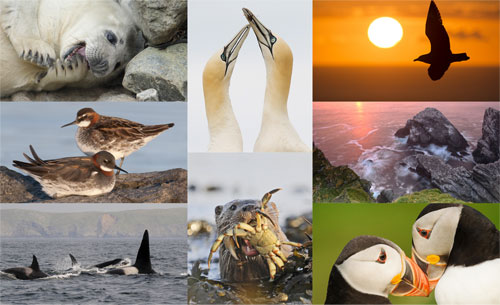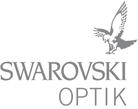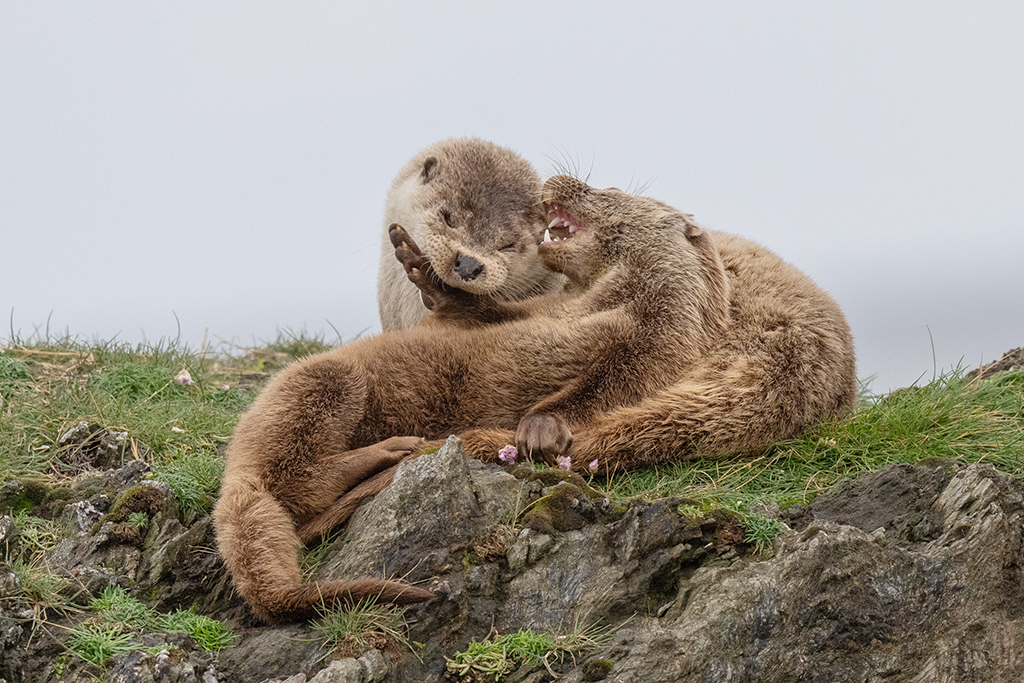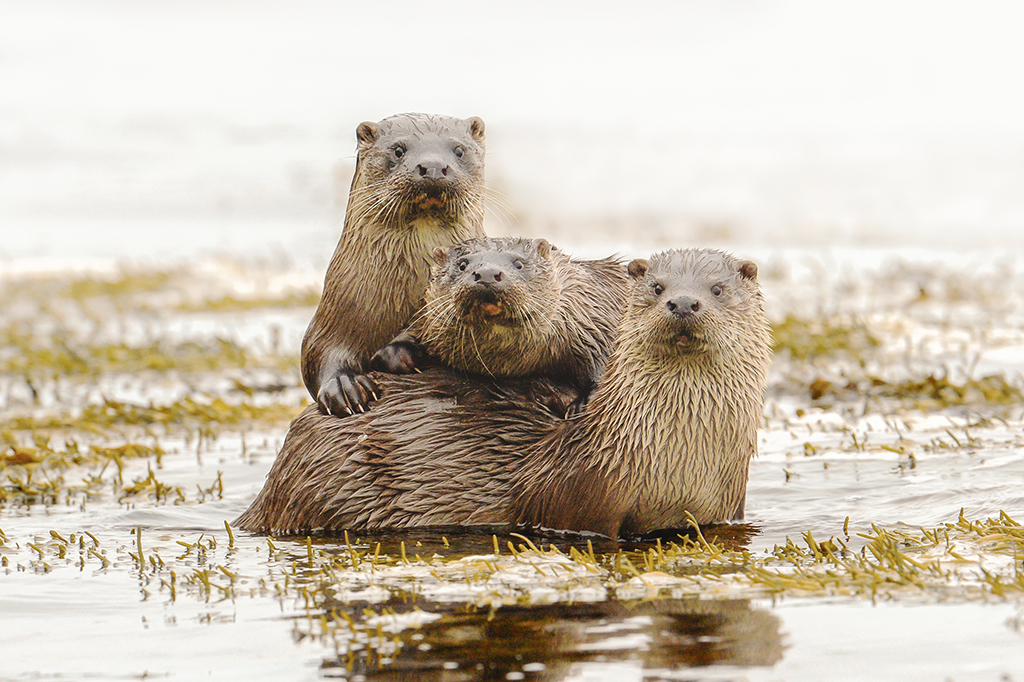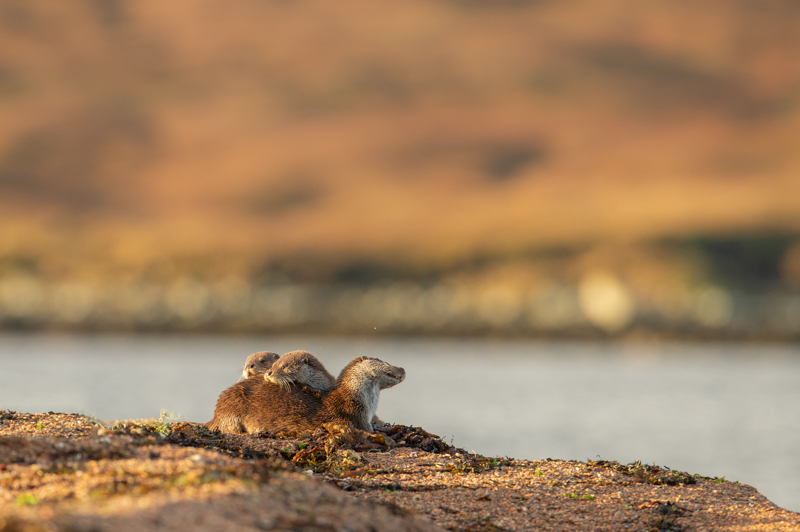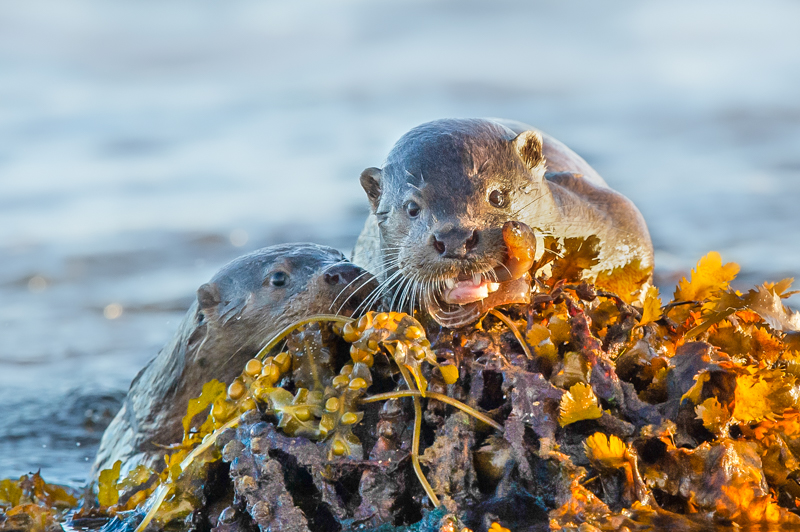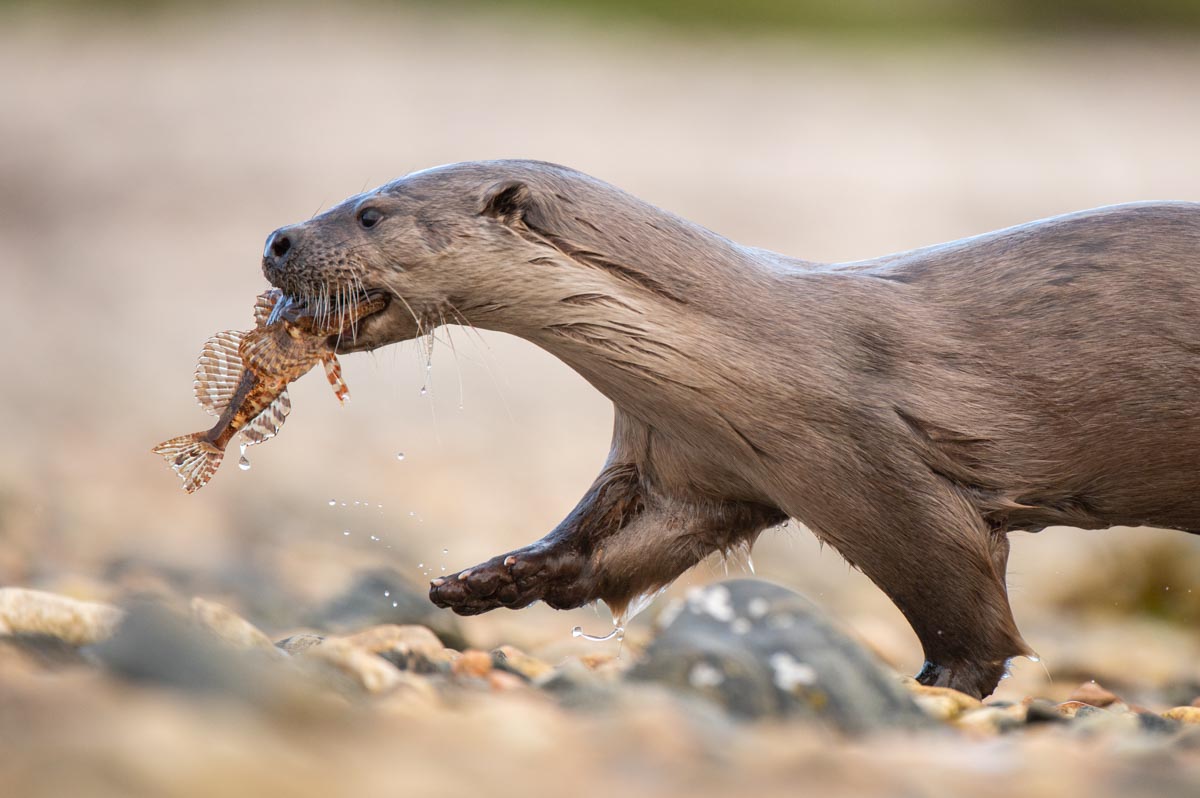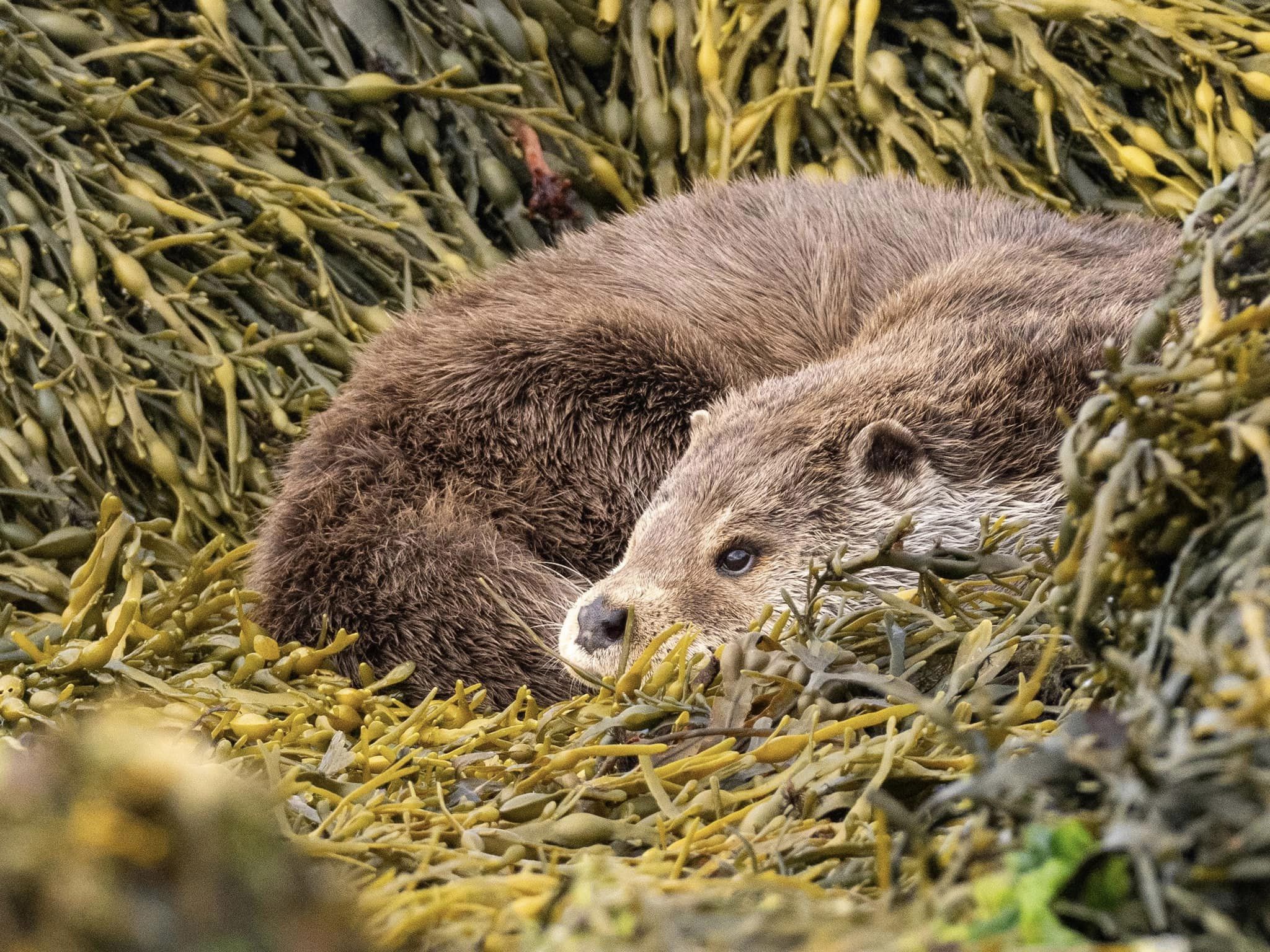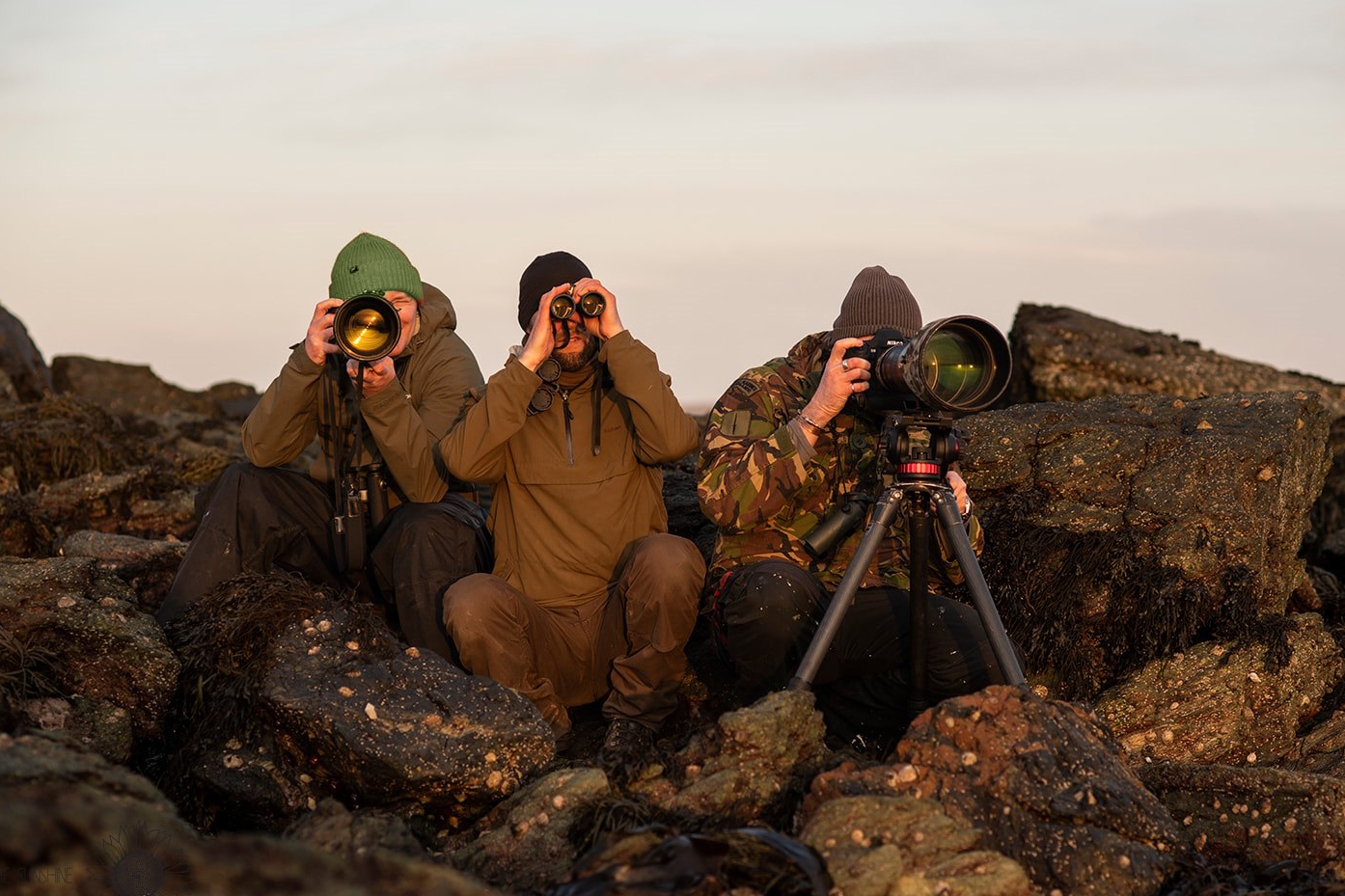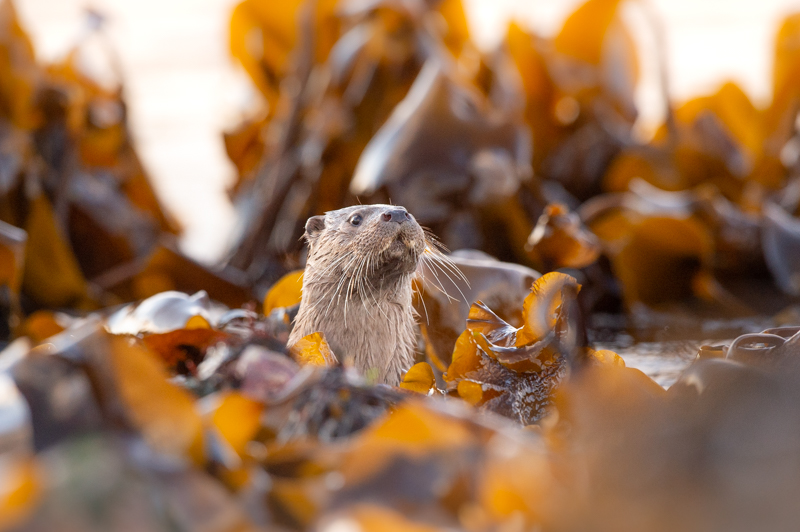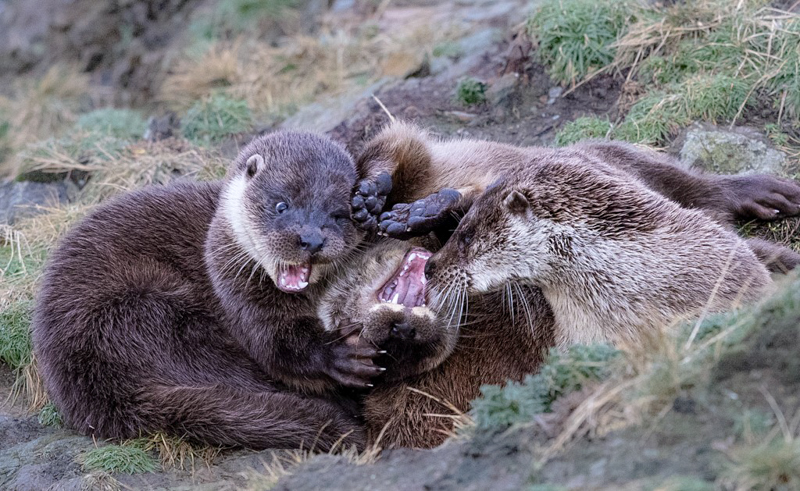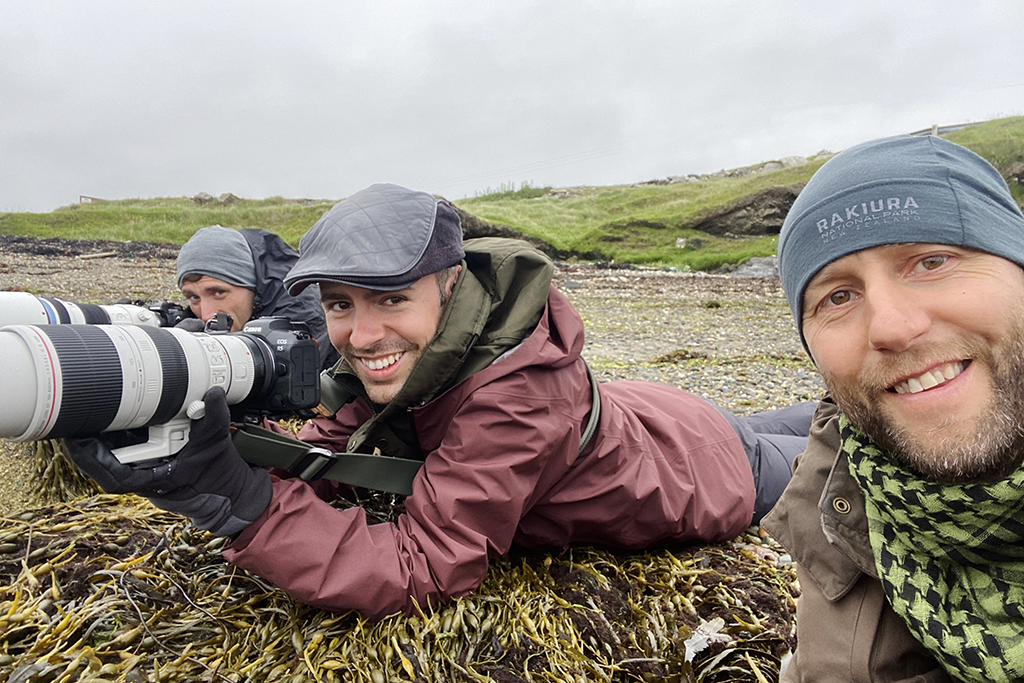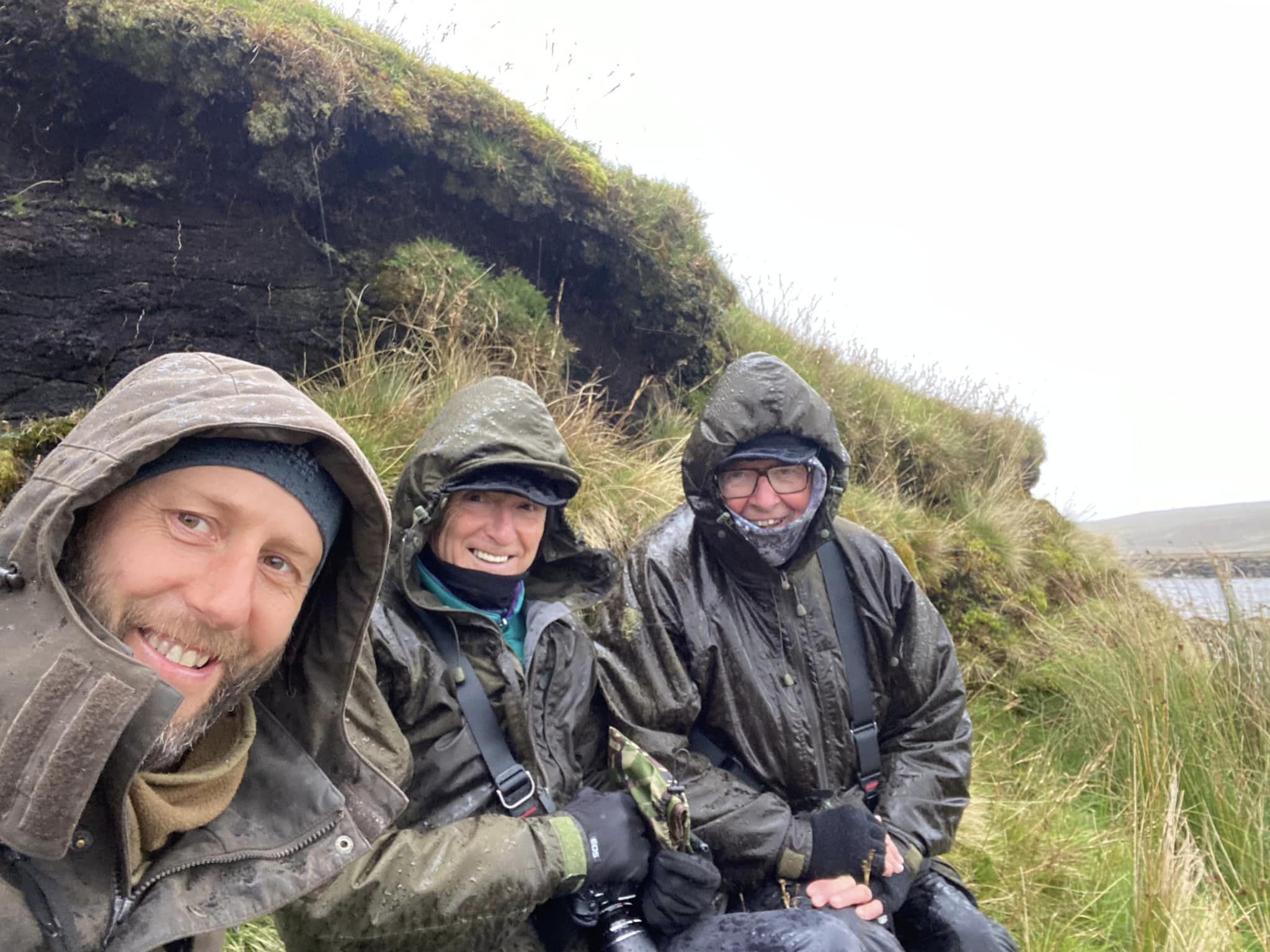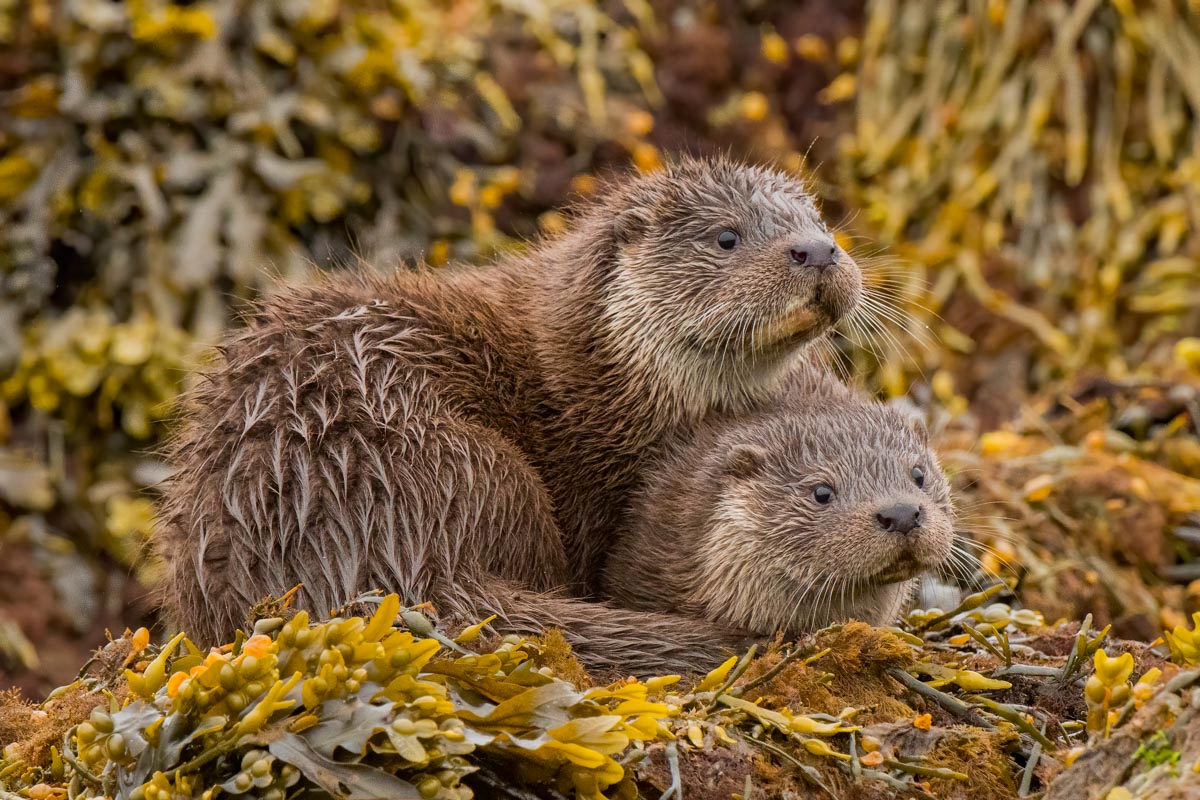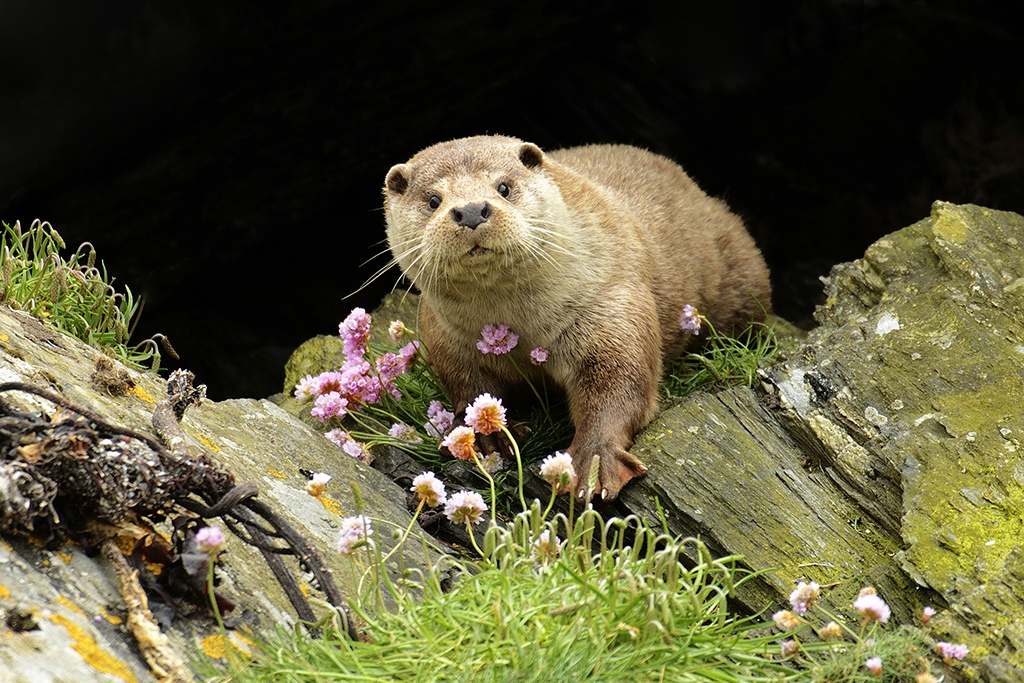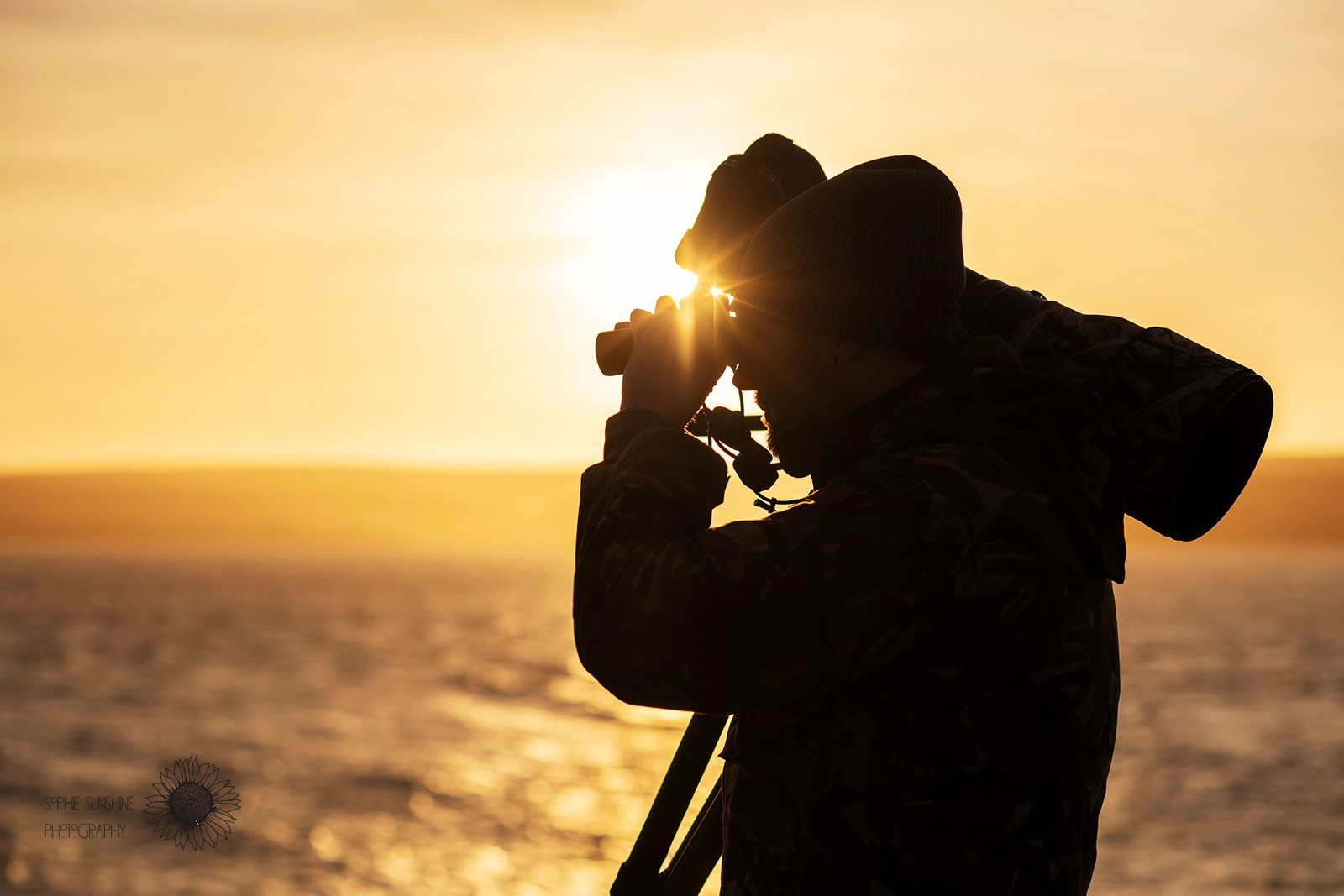Shetland Otter Photography Tours
The Eurasian Otter is a notoriously shy creature, so locating them can be a challenge, particularly if you are a visiting photographer with only a limited period of time available with which to work on them. Moreover, even if animals are found there is the still greater challenge of getting anywhere near them let alone in a responsible shooting position. Through our team of renowned Otter-tour professionals, we specialise in dedicated assignments expertly-led by photographers, for photographers.
What sets us apart from the photographers offering ‘Otter photography workshops’ is our level of understanding, experience and respect for the Otters themselves. Working with them week by week throughout the year we have up-to-date knowledge of the individuals and families we study, and this ensures we maximize your chances of the best encounters.
It is the many nuances of their behaviour and routines that, learned and understood from the countless hours we spend with these animals, combine to make the biggest differences on these assignments.
Whether you are after an exclusive one-to-one assignment, a shared itinerary with a partner or colleague(s) or a visiting tour company, we can tailor an itinerary for you.
Why Shetland?
The Shetland Islands are home to the highest known density of Eurasian Otters in Europe, and most probably the world as a whole. Though their status across Britain and Ireland has changed dramatically and for the better over recent years, Shetland is still widely regarded as the best place in which to experience, photograph or film Otters in the wild.
There is however much more to the Shetland Otter experience than sheer numbers that makes it so unique. Here, the remote coastal environments in which they thrive are well off the beaten track and we can work alone, a far cry from the shared encounters so commonly associated with the busy, honeypot sites elsewhere in Scotland – here it is just us, you and the Otters.
Here, where the shoreline stretches for miles, we can enjoy a visual perspective of their territory that is unhindered by the viewing obstacles and logistical constraints that often characterize their environment elsewhere in woodlands, winding rivers, and Scottish sea lochs. With these topographic advantages, we can study and follow them for hours at a time.
Add to this the context of Shetland’s rich coastal environment where in the summer Arctic Terns forage offshore, Fulmar soar along the clifftops, the evocative calls of Red-throated Diver sound overhead, or perhaps even Orca pass in the near distance (yes, it does happen!) or watching an Otter in golden winter light with the mele of winter rafts of Common Eider and Log-tailed Ducks feeding offshore and it is fair to say, nowhere does Otters like Shetland.
Testament to all of this is that from as far back as the mid-1980s, with Hugh Miles’s groundbreaking film, ‘Track of The Wild Otter’, through to the many current ‘blue chip’ natural history documentaries we have worked on, Shetland has always been the go-to location to tell the story of the Eurasian Otter.
Why us?
Otters are in our very foundations as a tour company at Shetland Nature. It was Brydon’s lifelong love, experience and knowledge of Shetland’s Otters, spanning over 40 years, that helped us establish and grow to the company we are today. Taking this unparallelled experience, along with collaborating Otter professionals Josh Jaggard, James Rogerson, John Moncrieff and Richard Shucksmith (the latter with whom Brydon co-authored ‘Otters in Shetland- the tale of the draatsi’, and has worked with on numerous blue-chip documentaries featuring Shetland’s Otters), we are proud to be regarded as the UK’s leading Otter photography tour specialists.
We study Otters year-round, season by season, and so at our core sites especially, we know the individuals within them. This level of up-to-date knowledge allows us to follow their lives with intimate knowledge of their routines, social structure and family life, which can be particularly special, following a mother’s trials and tribulations with her cubs.
We bring you into their world, sharing our knowledge of their behavior and ecology whilst exploring their territories along some of the islands’ most remote and beautiful coastlines. Here we are not only looking for the animals themselves, but also sharing our combined experience on how, where, and when to find them and, above all, how to do so responsibly.
It is important to us, and our tour participants that along with the encounters, memories and images enjoyed, they take with them the knowledge of how, where and when to find Otters but to do so responsibly.
Code of ethics
This aspect of the Otter experiences we offer is at the forefront of how we lead these tours, and the reputation we have earned because of that. We take our responsibility to Otters in these assignments very seriously. Otters are protected in law under the Wildlife and Countryside Act, and our ethics are bona fide, operating under a Schedule 2 license, authorized by NatureScot.
Our ‘we lead, you shoot’ policy
Our tour participants are always impressed and surprised to see we do not take our own cameras in the field. We operate a ‘we lead, you shoot’ policy when working on Otters. Our job is to use our up-to-date site knowledge, field skills and experience to get you into a shooting position and, above all, do so with your safety and the Otters’ wellbeing at the forefront of every assignment.
If shooting ourselves, it is all too easy for us to lose focus on you and indeed the wider surroundings we need to be tuned into. Leaving our own cameras behind ensures total commitment to you and the Otters alike.
The itinerary & day to day assignment
Our Shetland Otters prefer to forage during daylight hours and whilst the tide is low. To maximize our chances these assignments are timetabled to span this optimal foraging time. We usually aim to be out in the field for approximately six hours (although this may vary), spanning a two-to-three-hour period either side of low water when Otters are most active.
The majority of the sites we use are remote and off the beaten track. On average we may expect to walk anywhere in the region of two-five miles per day (rarely more), always at a gentle pace, scanning, searching and reading the signs as we go. These coastlines generally tend to be low lying where access onto the shoreline is easy.
When on the shore, there may be uneven ground with wet and seaweed covered rocks, and we need to be cautious and careful. Rest assured, at all times we make sure you are stable, safe and confident and always offer a hand for stability. For extra reassurance, we may also offer to carry your photographic equipment – another one of many reasons we do not carry our own.
With up-to-date knowledge, we concentrate only on sites that we know to be active at any given period. There are however considerations we must make each day to ensure we maximize your chances of success:
- Wind direction. Otters are scent sensitive, so we use only sites where wind is onshore;
- Physical ability. Consideration to the terrain of, and distance to sites used each day;
- Tour logistics. Meeting points arranged to suit locations used.
What are your chances?
As these are wild and elusive creatures, and even with the advantage of our knowledge and expertise, this can potentially still be a challenging assignment. On any given day we can never guarantee successful photographic encounters. However, it is extremely rare to not locate Otters each day (literally having only happened on a mere handful of occasions in almost 20 years of guiding), and simply unheard of not to have productive photo opportunities on multi-day assignments.
The more days we have, the more opportunities we can facilitate for you. We recommend a minimum of three days, with most assignments running for three to five days. This also allows time for potential weather disruption and also to visit multiple locations, each potentially offering different image possibilities.
Otters are captivating creatures and they lead fascinating lives. These assignments offer a very exciting and wide range of photographic possibilities as we track and follow them on their daily routines. Unlike many photo-tours that work on carnivores in baited, staged, or hide-based assignments, with Otters no two encounters are the same. We work with them on their terms as they forage, rest and play using only our knowledge and experience to get you into optimal shooting positions
Group size
Due to their shy nature and the potential logistical challenges of getting into position, each Otter assignment is booked on an exclusive basis. Ideally, we work on a one-to-one or, a one-to-two basis. In some instances, however, a third photographer may be possible, if as a small group they are physically and technically, evenly matched.
Summary of what to expect
- Learn Otter tracking skills; finding and reading the signs;
- Learn about their ecology, behaviour, and daily routines;
- Hone and improve field craft, essential when working with such shy animals;
- Working within the Otters’ environment; learning how to utilize the landscape & elements;
- Potentially covering two-five miles per day along low-lying coastline;
- Always working with Otters’ wellbeing coming before the images or experience desired.
Weather
Shetland weather is never predictable – or rather, this is its one predictable quality! It is true that winter weather can be wild, with gale force winds quite regular and storms not infrequent, yet even then we do also get some lovely calm, crisp and settled periods when the low golden light is simply breathtaking. For clothing we recommend several layers with good walking boots (or wellies) and waterproof jackets and trousers and, of course, gloves, hat etc.
The seasons – when to visit
We run Otter tours and assignment all year round. Like any other species however, their behavior and activity may vary with the seasons. Their breeding cycle is perhaps the most significant factor. Cubs can be born at any time of year however, on Shetland there is a recognized seasonality, with most cubs tending to be born mid-to late summer or, the similar period of winter.
This means that autumn is the season that is best for young cubs. By this time of year, cubs born in summer will be aged from around about two to four months of age. From this stage through the winter Otter families tend to have busy days. With mum provisioning not only herself with the prey she needs, but also her cubs so she must maximize the optimum tidal foraging windows. For family activity and behaviour we therefore recommend the months from September/October through to February-March as the best time. Their activity during these months of shorter days and longer nights also means that as largely diurnal hunters, they make the most of daylight hours by maximizing their foraging activity.
By early spring cubs may be upwards of ten to twelve months old and so they are often showing signs of independence, perhaps even separating from the family and so activity can be more sporadic and less concentrated.
During the summer months, when the sun barely sets Otters can be very selective of when they forage. During this season, both tides of the day are during daylight hours and so their activity may be less concentrated. Though there may be less chance of young cubs, there is something equally magical about watching an Otter forage as the dawn sun rises, eliminating the haar and early morning dew across the bird-rich landscape, or watching them rest on a coastal headland, ablaze with Sea Pink.
Generally speaking, we recommend that for target assignments to work specifically on Otters that we focus on autumn and winter. During summer there is the added attraction of what the breeding bird season offer and so Otters become one of many targets in a multi-species itinerary or workshop.
Otter Photography Details
Tour Costs:
- One-to-one – exclusive assignment for one= £375 per day
- Two-to-one – assignment for two working together = £425 per day
- Three-to-one – assignment for three working together = £200 per person
Contact us for quotes and possibilities for tour companies or small groups when potentially, multiple guides and sites can be used.




